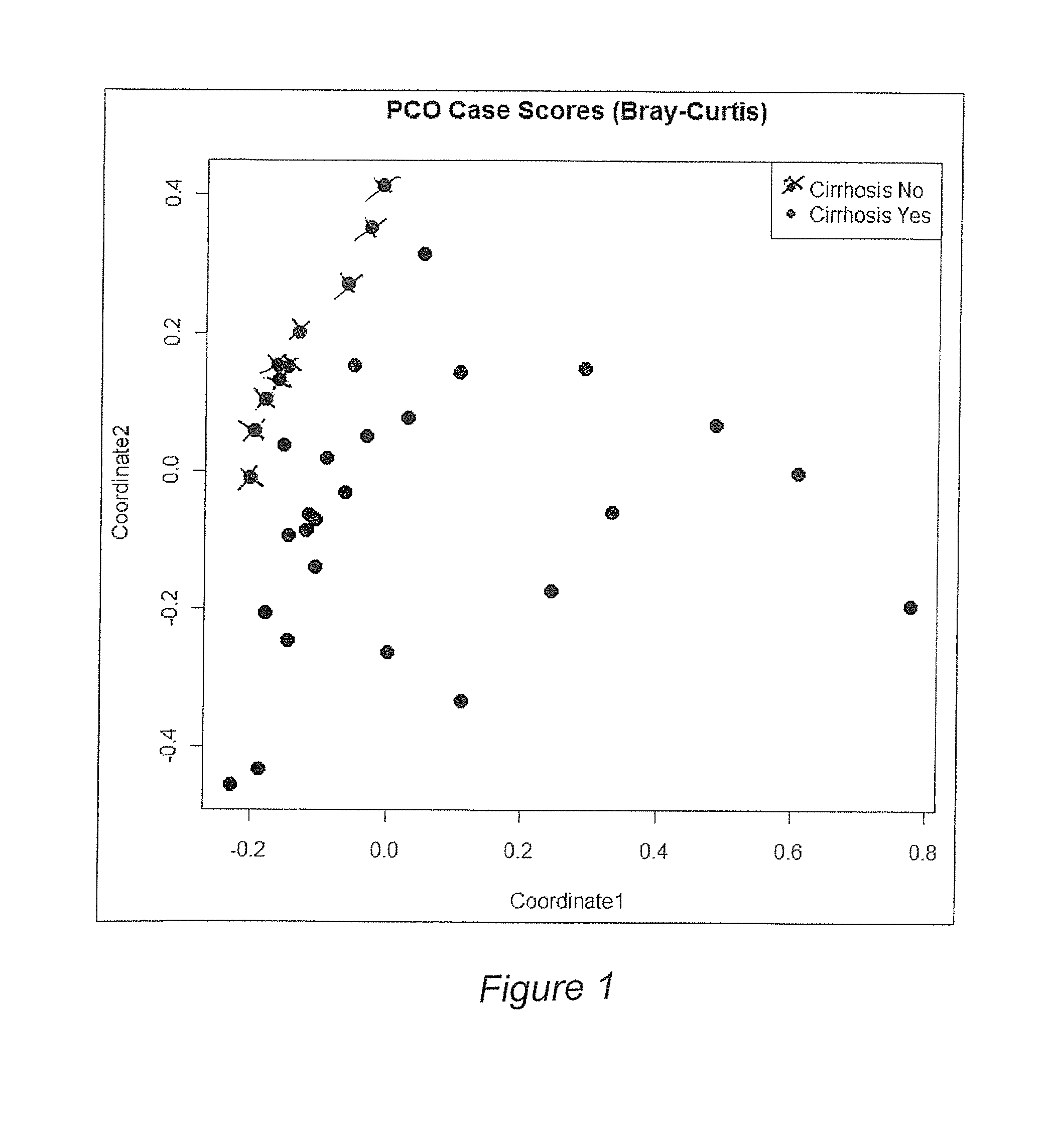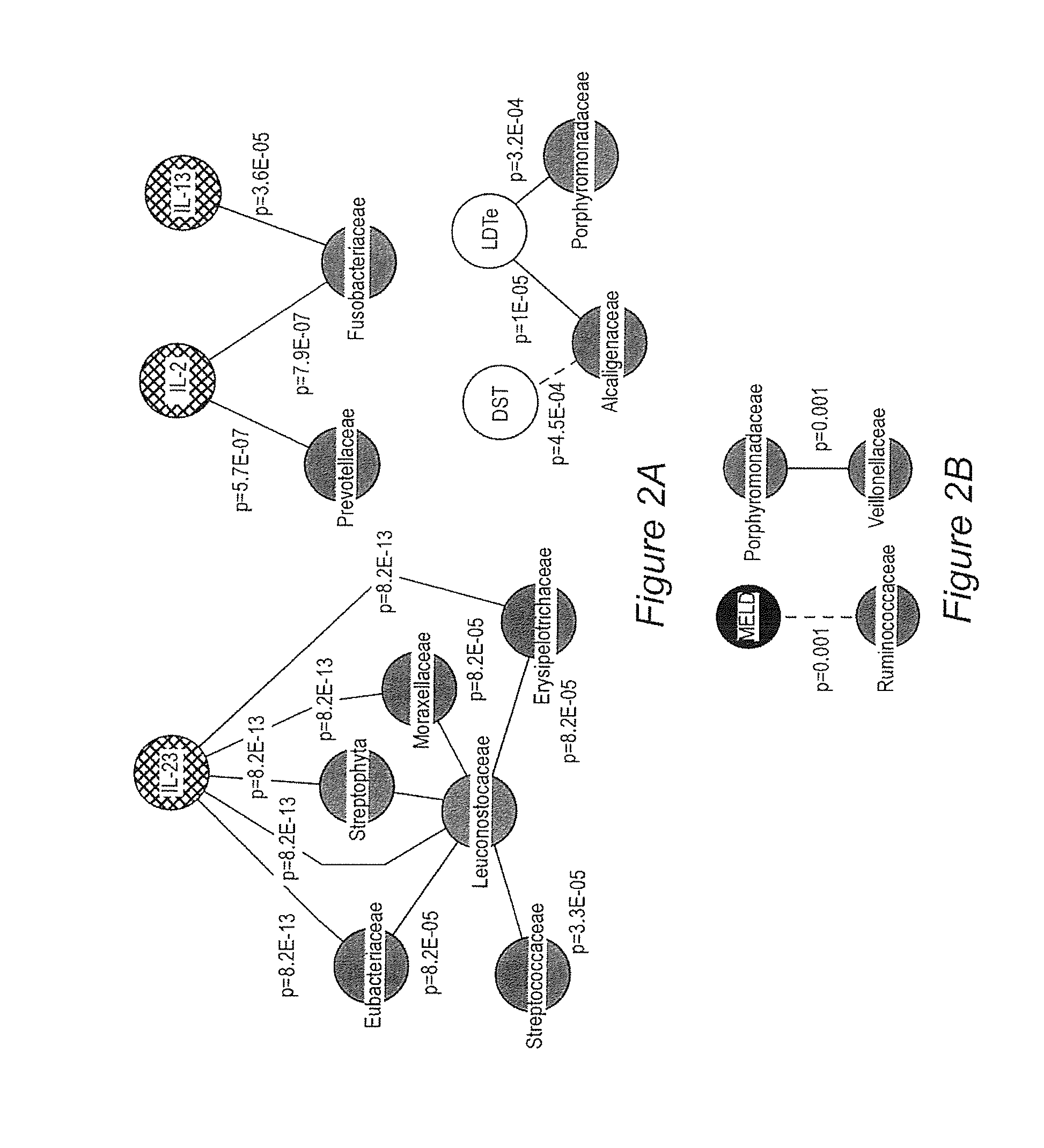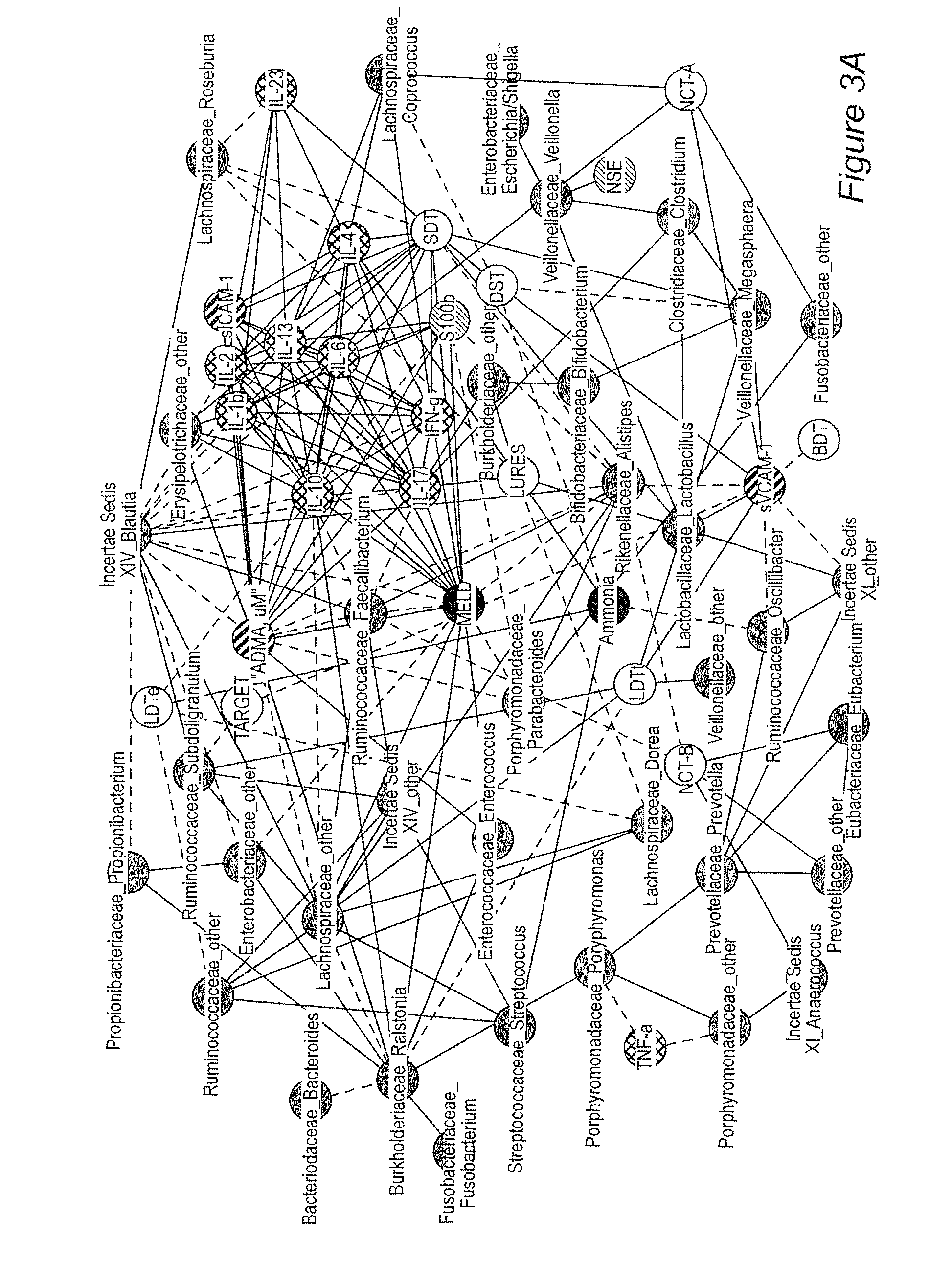Gut microflora as biomarkers for the prognosis of cirrhosis and brain dysfunction
a biomarker and brain function technology, applied in the field of gut microflora as biomarkers for the prognosis of cirrhosis and brain dysfunction, can solve the problems of affecting the effect of treatment protocol, and not having a clear correlation between cognitive impairment and gut microflora, etc., to achieve the effect of monitoring the efficacy of treatment protocol
- Summary
- Abstract
- Description
- Claims
- Application Information
AI Technical Summary
Benefits of technology
Problems solved by technology
Method used
Image
Examples
example 1
Linkage of Gut Microbiome with Cognition in Hepatic Encephalopathy
Abstract
[0054]Background / aims: Hepatic encephalopathy (HE) has been related to gut bacteria and inflammation in the setting of intestinal barrier dysfunction. We proposed to link the gut microbiome with cognition and inflammation in HE using a systems biology approach. Methods: Multi-tag pyrosequencing (MTPS) was performed on stool of cirrhotics and age-matched controls. Cirrhotics with / without HE underwent cognitive testing, inflammatory cytokines, and endotoxin analysis. HE patients were compared to those without HE using a correlation network analysis. A select group of HE patients (n=7) on lactulose underwent stool MTPS before and after lactulose withdrawal over 14 days. Results: 25 patients [17 HE (all on lactulose, 6 also on rifaximin) and 8 no HE, age 56±6 years, MELD 16±6] and 10 controls were included. Fecal microbiota in cirrhotics was significant different (higher Enterobacteriaceae, Alcaligeneceae, Fusobac...
example 2
REFERENCES for Example 2
PUM
| Property | Measurement | Unit |
|---|---|---|
| Composition | aaaaa | aaaaa |
| Content | aaaaa | aaaaa |
Abstract
Description
Claims
Application Information
 Login to View More
Login to View More - R&D
- Intellectual Property
- Life Sciences
- Materials
- Tech Scout
- Unparalleled Data Quality
- Higher Quality Content
- 60% Fewer Hallucinations
Browse by: Latest US Patents, China's latest patents, Technical Efficacy Thesaurus, Application Domain, Technology Topic, Popular Technical Reports.
© 2025 PatSnap. All rights reserved.Legal|Privacy policy|Modern Slavery Act Transparency Statement|Sitemap|About US| Contact US: help@patsnap.com



